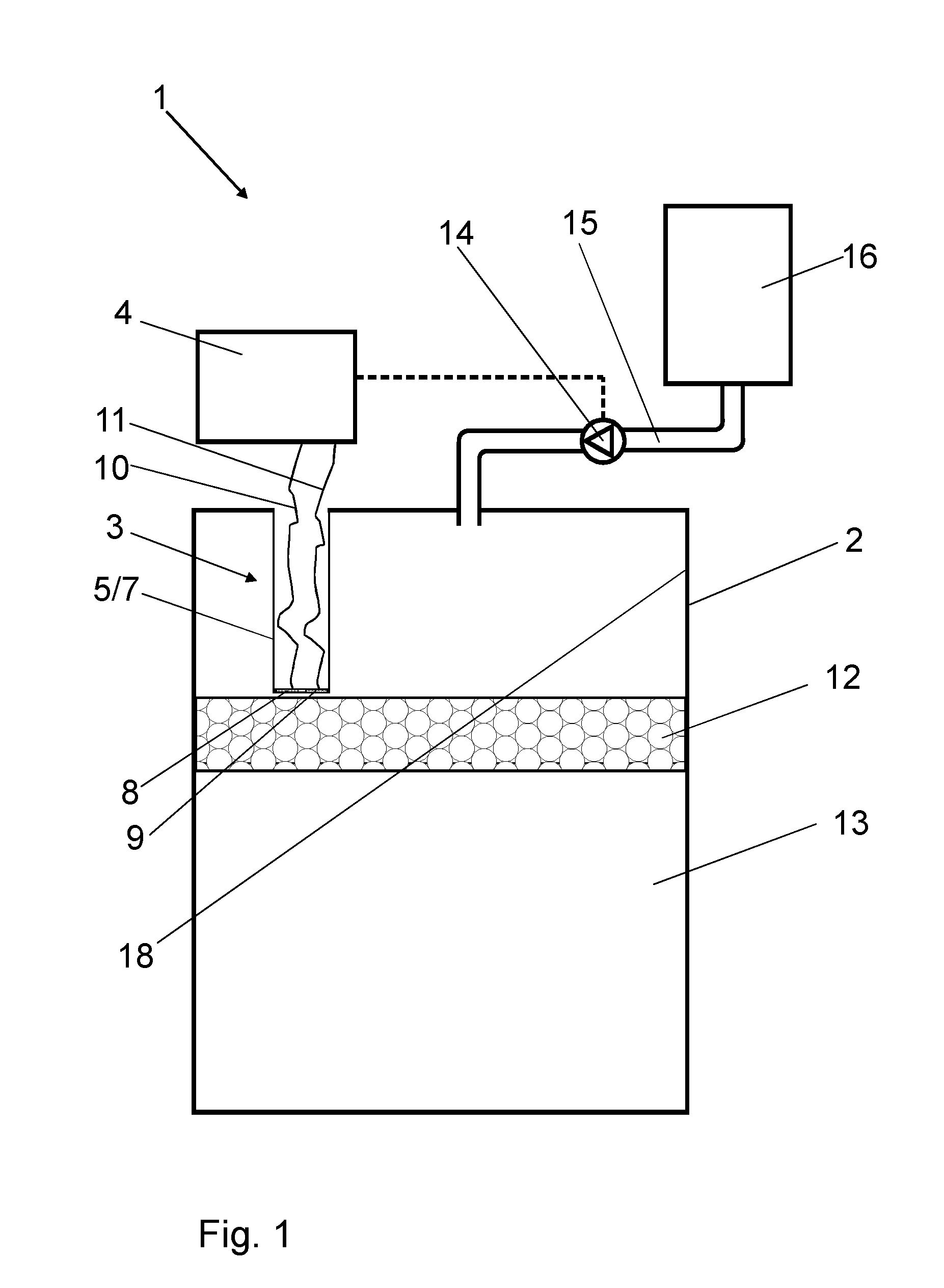Container with flexible walls
a technology of flexible walls and containers, applied in specific use of bioreactors/fermenters, biomass after-treatment, biochemical apparatus and processes, etc., can solve the problems of direct arrangement of sensors or their electrode surfaces, leakage and contamination between displaceable sheathing and adapters, and the inability of one or more sensors to adjust to different fill levels. , to achieve the effect of convenient positioning
- Summary
- Abstract
- Description
- Claims
- Application Information
AI Technical Summary
Benefits of technology
Problems solved by technology
Method used
Image
Examples
Embodiment Construction
[0032]A container 2 with a flexible wall, for example of a bioreactor 1, essentially comprises a container interior 6, a sensor 3 and a control and regulating unit 4.
[0033]According to the exemplary embodiment of FIG. 1, the sensor 3 comprises a first cylindrical sheathing 5 that projects into the container interior 6 and is designed as a flexible hose 7. According to the exemplary embodiment of FIG. 1, at the free end of the first sheathing 5, which is cylindrically designed, there is arranged a first electrically conductive plate 8 and, at a distance, a second electrically conductive plate 9. The two plates 8, 9 are connected to the control and regulating unit 4 via connection lines 10, 11. By applying voltage, the conductivity or impedance of a medium in contact with the plates can be measured between the two plates 8, 9 by the control and regulating unit 4. In particular, it can be determined whether the two plates are in contact with gas, foam or fluid. If desired a pump or val...
PUM
 Login to View More
Login to View More Abstract
Description
Claims
Application Information
 Login to View More
Login to View More - R&D
- Intellectual Property
- Life Sciences
- Materials
- Tech Scout
- Unparalleled Data Quality
- Higher Quality Content
- 60% Fewer Hallucinations
Browse by: Latest US Patents, China's latest patents, Technical Efficacy Thesaurus, Application Domain, Technology Topic, Popular Technical Reports.
© 2025 PatSnap. All rights reserved.Legal|Privacy policy|Modern Slavery Act Transparency Statement|Sitemap|About US| Contact US: help@patsnap.com



